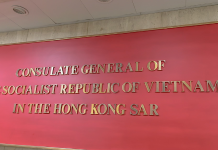The word calligraphy comes from two Greek words “kallos” and “graphein”, which together mean “beautiful writing”. Western calligraphy, as we know it, developed from the Latin alphabet which first appeared in Rome in around 600 B.C..
In ancient times, before the advent of the printing press, important documents and texts were written by scribes who were trained in the art of calligraphy However, despite the history and tradition of decorative penmanship, its daily application nowadays is limited. “It’s a dying art, whereas Chinese calligraphy is very much alive,” says Keith Tam, an associate professor in the Department of Typography and Graphic Communication at the University of Reading in Britain.
Tam is afraid the difficulty in preserving Western calligraphy could make it a lost art too.
He points out there are some common misconceptions about calligraphy. For instance, people often mix it up with typography. Typography refers to the style and arrangement of typeset letters that can be mass produced, usually through mechanised printing. Calligraphy on the other hand, is about “writing” in a reflective moment and movement.
“There are typefaces that try to mimic the spontaneity of calligraphy but still I think they are pre-made forms that are regularised. So I think there’s a difference,” says Tam.
As a calligraphy lover himself, Tam thinks it is important that people are aware of that difference and the fact that calligraphy can influence type design but not the other way around.
But the difficulties Hong Kong’s amateur calligraphers face in practising their craft are not so much people’s misconceptions about calligraphy, as practical matters such as a lack of supplies and venues where they can hold classes and workshops.
As a non-profit-making organisation, the Alpha-Beta club has no budget for promotions or even hosting a website. Cosmo Kwok Chi-fung, a volunteer calligraphy teacher and council member of the club says: “We have to find different venues for each workshop … in the past, we had to book places like the Cultural Center, which costs money.”







































